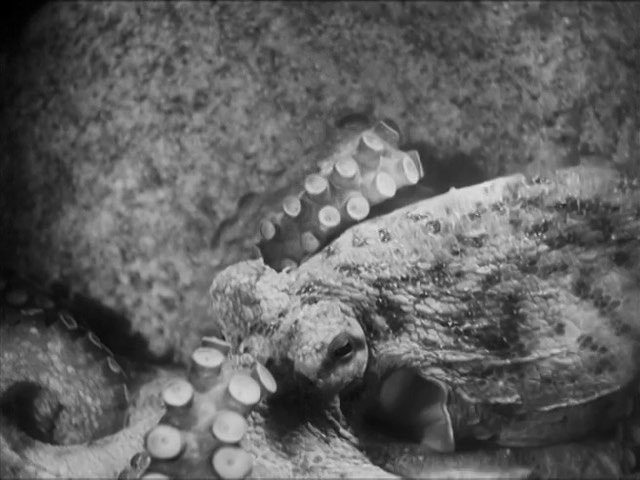
Jean Painlevé, La Pieuvre, 1928 (film still) ©Les Archives Jean Painlevé/Les Documents cinématographiques, Paris
“I got to know the octopus in the year 1911: I was nine years old and drove with my family to Roscoff, where the marine biology station consisted of a large aquarium that you could gaze into. I was so fascinated that I wanted to study zoology (…) The octopus became the theme of my first publicly screened film in 1927.”
Jean Painlevé
Jean Painlevé filmed La Pieuvre (1927–1928) in Port Blanc in Brittany. Influenced by his links with the surrealist art movement, Painlevé and his team developed a filmic visual language that questioned the anthropocentric orientation of scientific documentary films. In short sequential scenes, the dramaturgy of the images develops a narrative about octopuses that focuses not only on their anatomy and their abilities, but also raises awareness of the brutal impact humans exercise on their bodies. The filming method itself clearly had an experimental laboratory character. The ambivalence of the human-animal relationship is reflected most clearly in the more surrealist scenes: when an octopus clasps a human skull in an aquarium or slips down from a tree in the open air.
On the other hand, the contrasting close ups of octopuses breathing, looking and moving their skin brings their complexity, as yet unfathomed, ever closer to us. Short inserted texts comment on the anatomical similarities between humans and octopuses. All this makes the human treatment of octopus bodies towards the end of the film almost monstrous: a fisherman kills an octopus with his bare hands; an arm is fried on a hob. Painlevé focuses our attention on the individuality and aliveness of octopuses, their environments and their physicality, which have increasingly fallen under human control since the start of the last century.